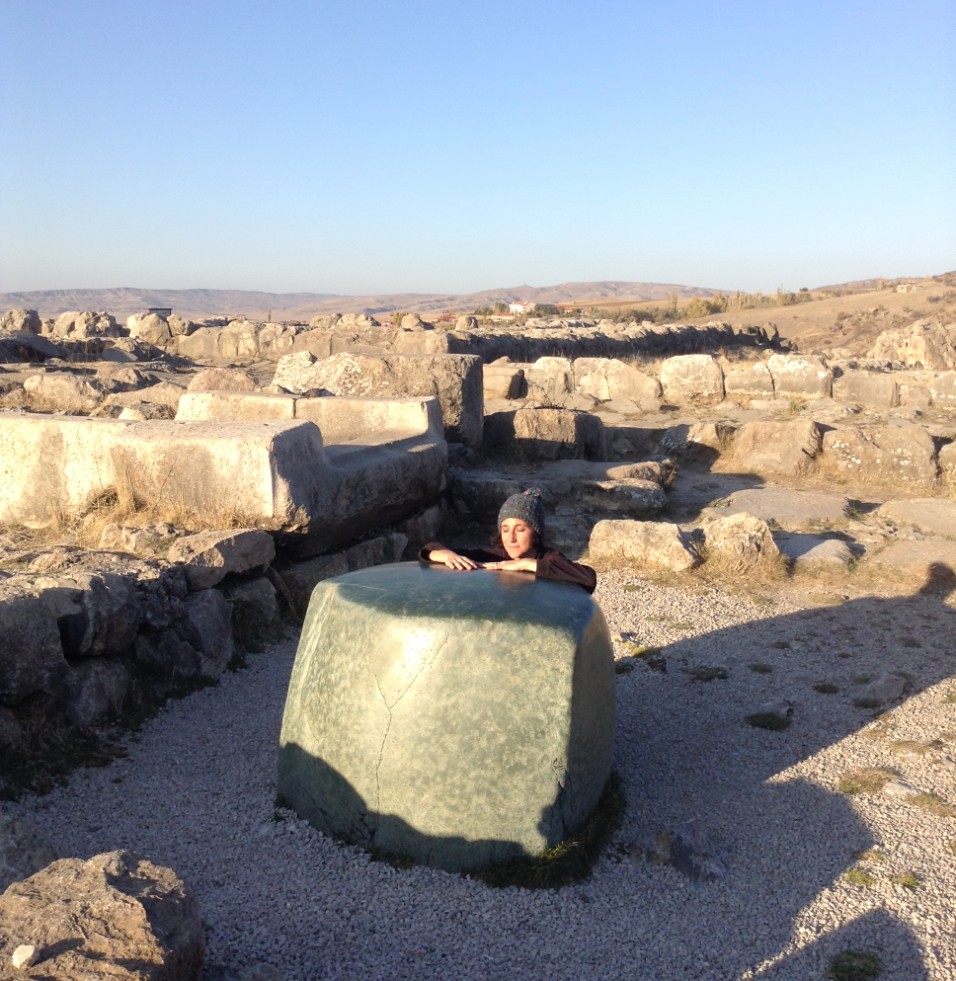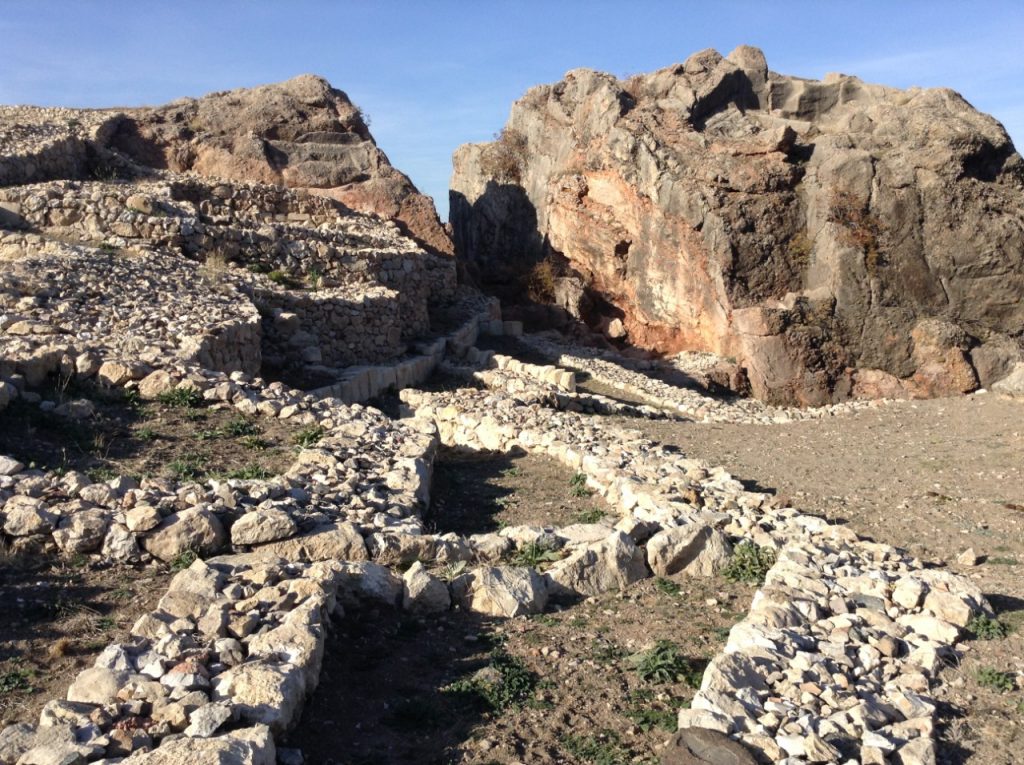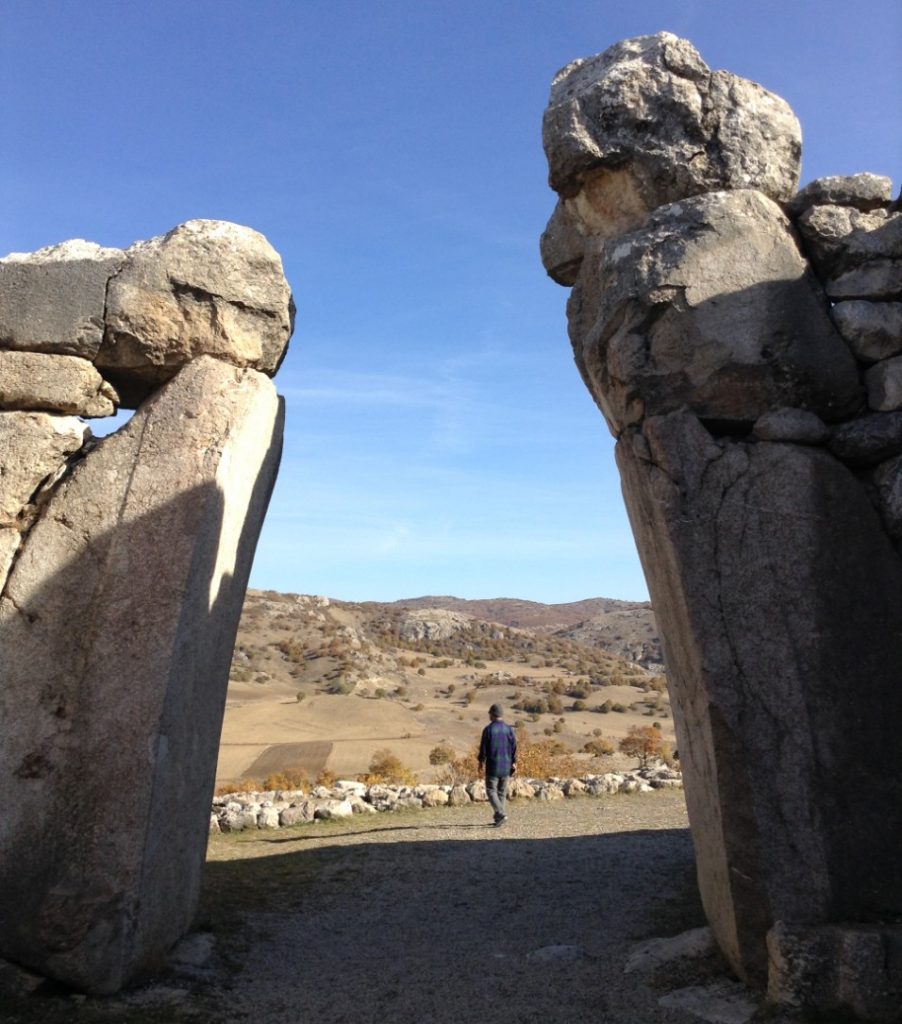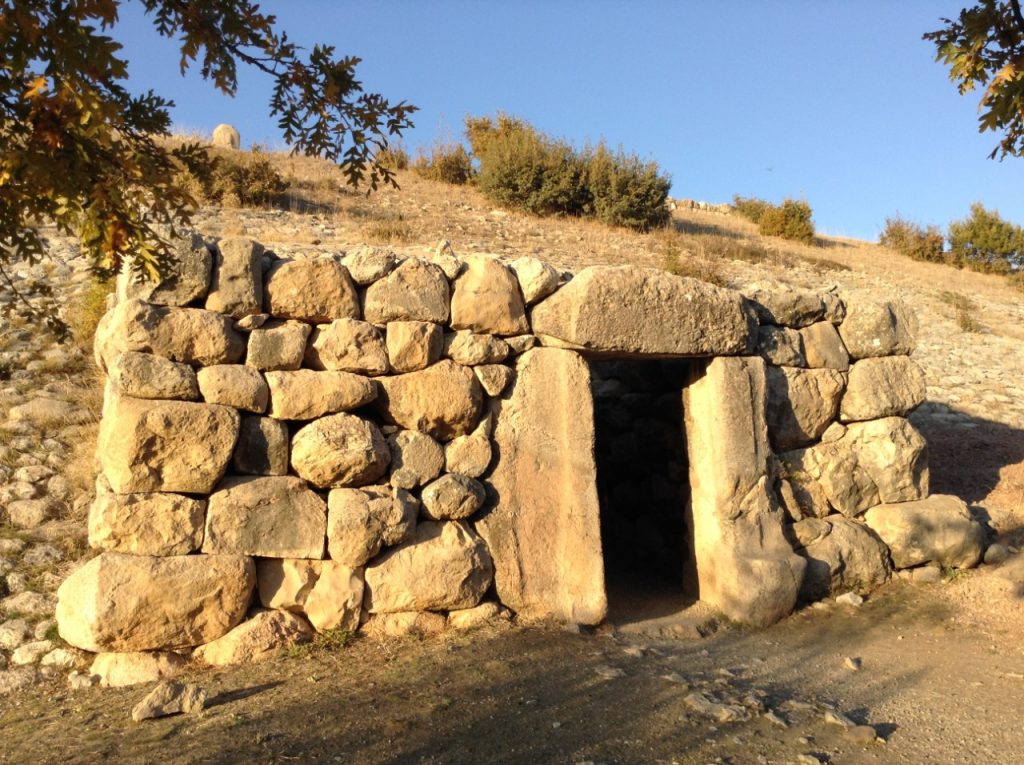Once there was a time when Hattusha was reached by foot, through a dense forest that flourished near the Red River or Kızılırmak and led to the magnificent city where the powerful king, Hattushali, ruled over the Land of Hatti. Hattusha is located in the modern-day province of Çorum, near Boğazkale. I was thrilled that Seçkin and I were about to explore this remarkable site that was once the capital of the Hittite Empire. The Hittites ruled the central and northern regions of Anatolia from 1600 – 1180 B.C. Nowadays, what remains of Hattusha are the ruins of its gates, city walls, temples and royal residences. Just before we started our journey, we met a man at the entrance who was selling small, hand carved stone sculptures. We spoke briefly while I held one of his unique treasures, a black stone owl, and felt its cool body slowly begin to warm in my hand. I complimented him on his handiwork and as much as I wanted that owl as my animal spirit guide, adventure was of the essence. We thanked him for his time and we were off to explore.

We slowly began our drive up the massive, mountain capital. When we reached the first tier, known as ”The Lower City’’, we were greeted by a golden colored dog who was eager to show us around. This is the location of the famous green stone I’ve heard so much about. I could see its allure from the parking lot; it had a soft, hazy glow, possibly its aura, that glistened under the sun. I ran towards it with childlike excitement and placed my hands on its warm, smooth skin. It was a powerful stone, or rock, rather. I could feel the energy of others coursing through its cubic body. It was smooth to the touch despite a few cracks with rounded edges and one subtle curve. This mystical stone has puzzled archaeologists and historians for years. The stone’s type is also unknown. Some believe it is nephrite, a type of jade or serpentine, both types of stone are found in the geology of the region. Was the stone sacred or holy? What was its true purpose? Did it possess magical powers? Nobody knows. It’s quite possible that this esoteric boulder was once part of a ritual practice considering its location. This area was the original location of many temples and where the Great Temple once stood, the largest structure in all of Hattusha, at the center of the complex. This temple was likely dedicated to the Storm God of Hatti and the Sun Goddess of Arinna, for they were considered the superior deities of the Hittites. Hattusha was also known as the cult center of the Hittites. They worshiped hundreds of deities; the Hittites honored these deities with shrines and carved reliefs at temples and sanctuaries in Hattusha and across Anatolia.

From here, we decided to go up to the very top and we would work our way back down. We went to the highest point of the capital city where we climbed a rocky staircase to reach the Ground Gate or Yerkapı a tunnel that runs beneath the city’s walls and is entirely made of stone that has managed to stay intact after all these years. Yerkapı is 70 meters long and is the best-preserved tunnel in Hattusha. Passing through this portal, the shadows of time, I could feel the past as it lingered under the veil of darkness, an invisible heaviness. After we exited the tunnel, we climbed just a bit higher to reach the Sphinx Gate or Sfenksli Kapı that marks the main entrance to the city. The sphinxes still cast their watchful gaze over the thousands of visitors that continue to pass through their gates every year. Replicas have since replaced the original statues, but these faux sphinxes still impressed me. Stoic guardians with shadowed, empty eyes, I felt like they were looking through me, deep into my soul and they emulated the same eerie energy as the originals. I wondered if their eye sockets were once filled with that same mysterious green stone found at the Great Temple ruins. Yet another mystery to solve. The Hittites are often associated with the Sphinx, perhaps this powerful, winged creature was their spirit animal. We ventured on to explore the ruins of “The Upper City” and visited the Lion’s Gate or Aslanlı Kapı. The lion’s heads and upper torsos projected out of the rock, they seemed alert, and rose above eye level so I had to look up at them. With the lions looking down on me, I felt some intimidation. This was definitely their territory and I better not try to pull a fast one on their watch. We made a quick stop at the King’s Gate or Kral Kapı and admired the relief sculpture of a warrior-god at the entrance.

The views from any level at Hattusha are dynamite. I felt peaceful within the cocoon of nature that surrounded this ancient citadel. An endless horizon of forest stretched out before us over rolling hills and the trees glowed with vibrant shades of autumn. As we wandered around the wide-open spaces of Hattusha, I felt I could easily be swallowed by the sky if I were to disrespect a deity. It’s no wonder that the Hittites had a great respect for nature living intimately with the natural world and so exposed to the elements. This vulnerability likely motivated their commitment and devotion to appease the deities and keep the peace. We decided to save Yazlıkaya, the open-air rock sanctuary, for the next time we visit since it is located on the opposite end of the complex and we could only take in so much at this time. Hattusha’s rich history is a lot to process and at the very least a few days are necessary to truly see everything that is visible. I’m certain there is still so much more that remains unseen and is yet to be discovered. Over the years, countless artifacts have been recovered at Hattusha and are displayed at the nearby Boğazköy Museum, which I highly recommend taking the time to visit. Two of the original sphinx statues are exhibited here and the experience of being so up close and personal with these bizarre creatures is truly priceless. The Hittites were an incredibly innovative culture; this can be seen in their ingenious ceramics and countless clay tablets with the cuniform script.

Hattusha is by far, an impressive, memorable site. It’s no wonder flocks of people come here consistently to explore and experience the heart of the Hittite civilization. The strength and power of the Hittites is still ever present and this energy continues to live on inside the rocks as it vibrates throughout the landscape. Come experience the power of the past while taking in the presence of Hattusha.
Images courtesy of the author.









